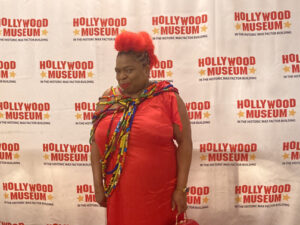
Photos by Mikaela STONE
By Mikaela STONE
Converted from the former Max Factor Cosmetics Building into an ode to classic Hollywood, the Hollywood Museum on Highland Avenue presents a new exhibit in honor of Black History Month: This Joint is Jumping. The exhibit is titled to honor the 1937 blues song by Fats Waller and contains memorabilia representing Eddie Murphy, Queen Latifah, Whoopi Goldberg, Samuel L. Jackson, Wayne Brady and many others. To cut the metaphorical ribbon, a selection of Black actors gave speeches about what Black History Month and the actors presented in the exhibit meant to them, including the award winning Chrystee Pharris from “Monogamy,” former child actor and philanthropist Rodney Allen Rippy, Emmy nominated Cassandra Creech of “The Bold and the Beautiful,” “Mission Impossible” legacy actor Phil Morris, Rico E. Anderson from “Star Trek” and Marvel’s Diamond White.
A score of Hollywood celebrities arrived to celebrate the exhibit’s opening and cheer on their peers. Among those walking the carpet with the speakers were Hollywood Museum President Donelle Dadigan, often dubbed “Hollywood’s most influential woman,” Ro Brooks from Tyler Perry’s “The Haves and the Have Nots,” Rachel Kylian from “Magnum P.I.,” Shola Adewusi of “Bob Hearts Abishola,” Emmy winner Kim Estes, Elaine Ballace from “The Rich and The Ruthless,” Don Fullilove from “Back to the Future” and Diana Lansleen of “Days of Our Lives” – one of the TV shows featured in the exhibit, which first faced criticism for its depiction of Black actress Tina Andrews in an interracial relationship. “Days of Our Lives” made history again in 2020 by featuring the first onscreen marriage between two Black characters.
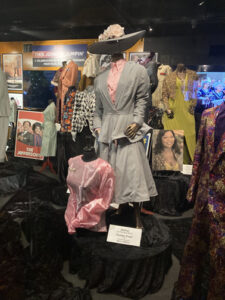
The exhibit itself featured an array of costumes from award winning Black actors and musicians including an outfit from Whitney Houston World Tour to dresses performed in by Natalie Cole and Eartha Kitt as well as a set of flowered jumpsuits worn by the Pointer Sisters. The TV and movie costume section, arranged by costume designer Sean LeBlanc, contained outfits from TV shows such as “The Jeffersons” designed by Betsey Potter, and a bubblegum pink RuPaul outfit from the movie “Zombie Prom” designed by LeBlanc.
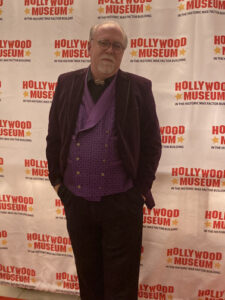
Accessories were not forgotten. An array of jewelry from Young Queen Charlotte and “Bridgerton” were also featured. Many of the costumes on display were personal favorites brought in by the actors. Lansleen noted the importance of the display saying, “Costumes make so much of the character” and that seeing the costumes from “Days of Our Lives” in the Hollywood museum reminded Hollywood “who we have been and where we have been.”
Senator Maria Elena Durazo set the tone for the night as an activist and the mentee of James Lawson, who worked side-by-side with Martin Luther King. She acknowledged “all our predecessors who came here before, when it was even more difficult.” However, she was not the only politician who arrived to support the exhibit.
Dom Jones, the first Black candidate to run for state assembly in Orange County who is running on a platform of “unity and reason” and “humans not colors” was also in attendance.
Also honored was Adela Farmer, the first Black costume designer in Hollywood. Betsey Potter regaled those present with the story of how, when faced with opposition from International Alliance of Theatrical Stage Employees, the stars of the sitcom “Good Times” refused to do the show with producer Norman Lear without a complete Black crew. This theme of opening opportunities for others who then paid that kindness forward was seen repeatedly in the stories the speakers shared about their own lives. Chrystee Pharris pointed this out, calling others to “trust and believe [marginalized communities] are talented. All we need is an extra step.” She acknowledged how the representation that had come before her “really [did] matter” to her success as well as the actors who built one another up in an industry “tearing [her community] down.” Pharris instructed her own generation to “make sure [they] pass it on to the next [generation].”
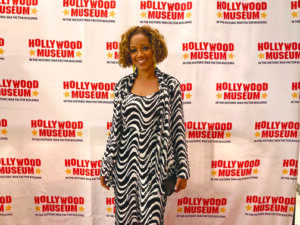
Growing up as a little boy who watched Nichelle Nichols in “Star Trek” to becoming an actor in “Star Trek” himself, Rico E. Anderson echoed Pharris’ emphasis on not only representation but varied representation, not just stories of slavery and the ’hood, saying “while [those stories are] important, [Black people are] so much more.” Quoting Malcom X, he reminded those present that “[Black] history did not begin in chains.” Anderson recognized that while a lot of work is needed in Hollywood, the progress represented in the Hollywood Museum and on screen could not be denied. Like the other speakers, he acknowledged the actors who came before him, namely Robert Guillome, who proved to Anderson that meeting one’s heroes does not disappoint.
A familiar face to many, Rodney Allen Rippy pulled Jack in the Box out of foreclosure at the age of 3½ and went on to be the youngest person ever to chart on Billboard with his album “Take Life A Little Easier.” Now Rippy is the executive producer of the Country Soul Award and is launching a nonprofit called The Rippy Foundation for at-risk youth. He has helped pave the way for what he would call “plenty of room and plenty of stories.” He is excited “to see what is to come.” Rodney Allen Rippy has his own shelf in the This Joint Is Jumping exhibit.
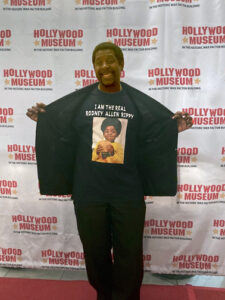
Cassandra Creech grew up in Clayton, North Carolina listening to Rodney Allen Rippy’s record. Standing in the Hollywood Museum, recounting her “Herstory,” Creech recognized the poster for “The Color Purple” on the opposite wall honoring Whoopi Goldberg and pointed out that the movie had been filmed in North Carolina on her English teacher’s farm. She delivered her speech alongside Rippy whose album was not only the first album she had but was also the first person she met in LA (he helped her get a quarter into the parking meter). These full circle moments demonstrate the “synchronicity” of Creech’s life as she went from a girl idolizing Lola Falana to an Emmy nominee.
Creech’s mentee, Diamond White, recognized she had become the representation she needed as a child. For Marvel, she plays Moon Girl, a dark skinned 13-year-old genius with Afro pigtails – something White and many others would have loved to see when they were young.
To Phil Morris, “Black history is [his] father.” Greg Morris starred in “Mission Impossible” and was featured on “The Dick Van Dyke Show,” spurring the longest laugh hold in history. Making such history is what allowed others to follow in his footsteps. Phil Morris recognized the progress made in Hollywood has “come with a cost, but people like [his] father paid it.” He, like the other speakers, intended to keep “passing the torch” to the next generation and making life easier for those who come after.
